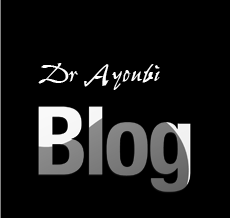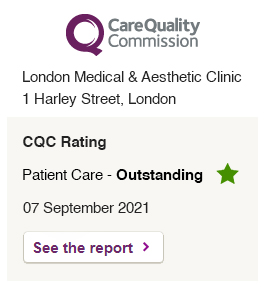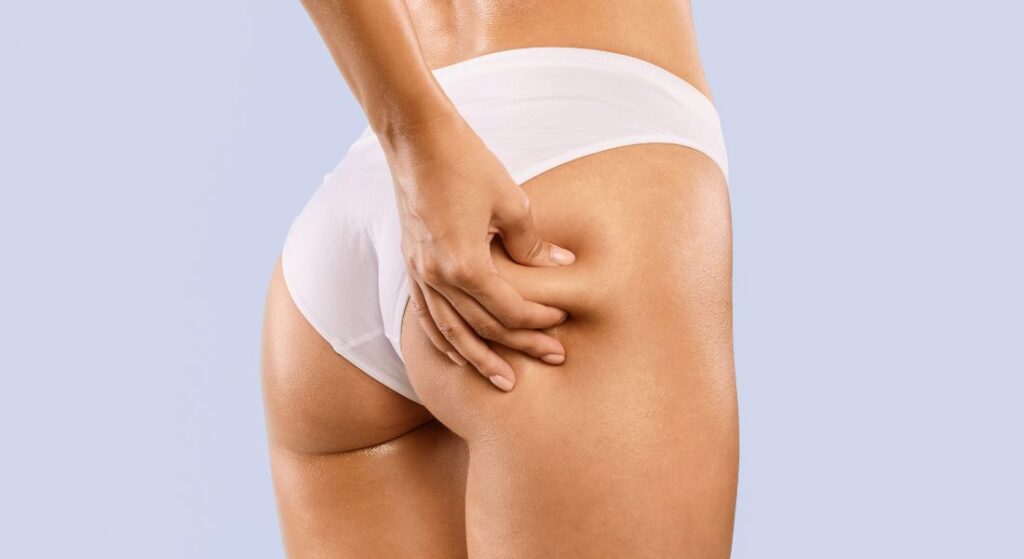
If you’re considering Cellulaze treatment to reduce the appearance of cellulite, one of the first questions you might have is: “Is it painful?” Knowing what to expect during the procedure can help ease concerns. Understanding the post-treatment process prepares you for a more comfortable experience.
Cellulaze is a minimally invasive, laser-assisted treatment designed to address cellulite by targeting fibrous bands, fat deposits, and skin thickness. While the procedure involves some level of discomfort, pain management strategies and post-procedure care can significantly improve your comfort.
In this guide, I’ll walk you through what Cellulaze feels like, how pain is managed, what patients report about the experience, and tips to make recovery easier.
How Cellulaze Works
Cellulaze works beneath your skin to target the root causes of cellulite, rather than just masking it on the surface. By addressing the structural issues under your skin, it offers results that are more lasting than creams or topical treatments. During the procedure, you’ll notice three key effects:
Breaking fibrous bands: These tight bands pull your skin down, creating the dimples that make cellulite so noticeable. Cellulaze carefully releases these bands, which helps smooth the skin and reduce the dimpled appearance.
Melting fat cells: The treatment also targets fat pockets beneath the skin, softening them and creating a more even surface. This helps your skin look smoother and reduces lumps.
Stimulating collagen production: Over time, your skin gradually becomes thicker and firmer thanks to increased collagen. This natural support helps maintain the smoother contours and prevents new dimples from forming as quickly.
With time and proper care, you’ll likely see a visible improvement in the texture and firmness of your skin, making cellulite less noticeable and giving your legs, thighs, or buttocks a smoother, more contoured appearance.
What Cellulaze Feels Like During Treatment
During your Cellulaze session, you can expect several sensations, though most people find them manageable. Here’s what usually happens:
Numbing from local anaesthesia: Your clinician will numb the treated area so you feel minimal discomfort. You’ll still notice some movement, but sharp pain is rare.
Mild pressure or tugging: As the laser works beneath your skin, you might feel a gentle pulling or stretching. This is normal; it’s the device breaking down fibrous bands and smoothing the underlying tissue.
Warmth or heat: You may notice a sensation of warmth as the laser targets fat cells and stimulates collagen production. It shouldn’t be painful, just a gentle heat that signals the treatment is working.
Most people describe the experience as mild to moderate, more like pressure or stretching than actual pain. Your clinician will check in frequently to make sure you’re comfortable and may adjust the technique if you feel any significant discomfort.
By knowing what to expect, you can feel more relaxed going into the procedure, understanding that these sensations are part of the process that helps give you smoother, firmer skin.
Pain Management During Cellulaze
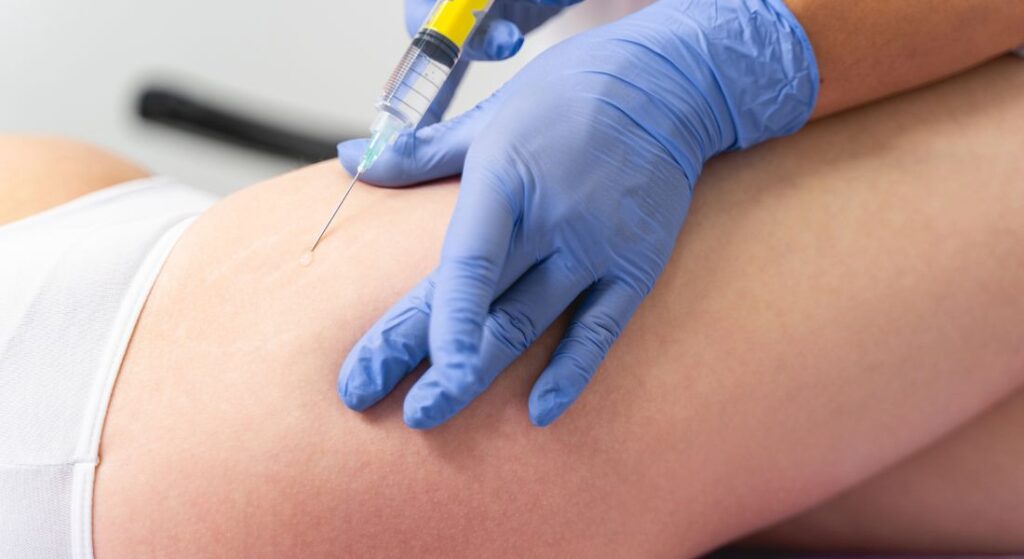
Managing discomfort is a key part of your Cellulaze experience. While the procedure works beneath your skin to target fibrous bands and fat, several strategies ensure you remain as comfortable as possible throughout. Here’s what you can expect:
Local Anaesthesia
Your clinician will numb the treated area using either injections or a topical anaesthetic cream. This greatly reduces discomfort and helps you stay relaxed while the laser does its work. Most people find that the numbing effect allows them to feel pressure and movement but not sharp pain, making the procedure much easier to tolerate.
Sedation (Optional)
If you feel nervous or are particularly sensitive, light sedation may be offered. Sedation helps you stay calm during the session and, in some cases, you might not even remember parts of the procedure. This option can be especially reassuring if it’s your first time undergoing a laser treatment.
Cooling Techniques
To counteract the warmth produced by the laser, many clinics use cooling devices or ice packs. This added step not only helps reduce discomfort during the procedure but also soothes the skin afterward, making the entire experience more comfortable.
Open Communication with Your Clinician
One of the most important ways to manage pain is by speaking up. If you feel any discomfort, you can let your provider know immediately. They can adjust the pressure, pause briefly, or modify the technique to keep you at ease. Feeling heard during your treatment makes a big difference in comfort and overall experience.
Post-Treatment Comfort Tips
Even after the procedure, some mild soreness or tenderness is normal. You can use over-the-counter pain relief if needed, follow your clinician’s instructions on gentle movement, and apply ice packs to help soothe the area. Most people find that these measures keep any discomfort minimal and short-lived.
By combining these strategies anaesthesia, optional sedation, cooling, open communication, and simple aftercare you can feel confident that your comfort is a priority throughout the Cellulaze process. Knowing what to expect and having tools to manage sensations can help you relax, focus on the results, and enjoy the benefits of smoother, firmer skin.
What to Expect Immediately After Treatment
Right after your Cellulaze session, it’s normal to notice a few temporary effects. Knowing what to expect can help you feel more prepared and relaxed:
Mild swelling and redness: You might see some puffiness or slight redness in the treated area. This usually settles within a few days as your skin begins to recover.
Tenderness or soreness: Many people describe a bruise-like or tight sensation where the laser was used. This tenderness is normal and generally mild.
Small bruises or tiny incisions: Since the procedure involves tiny entry points for the laser, small bruises or marks can appear. These usually fade within a week, and any tiny incisions heal quickly.
At this stage, any discomfort is typically mild and can be managed with over-the-counter pain relief if your dermatologist recommends it. You may also find that gently moving or stretching the treated area helps reduce stiffness and promotes comfort.
It’s important to remember that these effects are temporary and part of your body’s natural healing process. Most people find that within a few days, they can return to their normal activities while still taking it easy on the treated area.
Recovery and Comfort Tips

The first week after your Cellulaze treatment is key for comfort and getting the best results. Paying attention to your body and following some simple guidelines can make a big difference in how you feel:
Compression Garments: Wearing a compression garment over the treated area helps reduce swelling, supports your skin as it heals, and can even improve the final contour. Think of it as giving your skin a gentle hug while it recovers.
Gentle Movement: Light walking is excellent for circulation and can help prevent stiffness, without putting stress on the treated area. You don’t need to push yourself just keep your body moving gently.
Avoid Strenuous Activity: It’s best to avoid heavy exercise or intense workouts until you feel comfortable and your clinician advises it. This gives your body time to heal and allows the treated tissues to settle properly.
Cold Compresses: Applying ice packs or cold compresses can help reduce swelling and soothe tenderness. Just remember to wrap ice in a cloth to protect your skin.
Pain Relief: If you feel mild discomfort, over-the-counter pain medications can help but only take what your dermatologist recommends. Most people find this sufficient to stay comfortable.
Listen to Your Body: Everyone heals a little differently, so pay attention to how your skin feels. If something feels unusually painful or concerning, reach out to your provider.
Following these tips can help make your recovery smoother and more comfortable, while also supporting the best possible results. With a little care in the first week, you’ll likely start noticing your skin looking firmer, smoother, and more even.
Patient Experiences: How Painful Is Cellulaze?
If you’re curious about how Cellulaze feels, you’re not alone pain is a common concern. The good news is that most patients report it’s much less painful than they anticipated. Here’s a closer look at what people have shared:
– “It felt like mild pressure and warmth, but the numbing made it easy to tolerate. I could feel the device moving beneath my skin, but it wasn’t uncomfortable.”
– “I was nervous going in, but the procedure was surprisingly comfortable. Any soreness afterward was minimal, and I could manage it with simple over-the-counter pain relief.”
– “The tenderness during recovery was mild, especially when I wore my compression garment and kept up with gentle movement. It didn’t interfere with my daily activities.”
– “I expected more pain, but the combination of local anaesthesia and the clinic’s cooling techniques made a big difference. It felt more like stretching or pressure than anything sharp or painful.”
These experiences show that with proper anaesthesia, optional sedation if needed, and attentive post-care, any discomfort from Cellulaze is typically mild and temporary. Most people find that the sensations during the procedure pressure, tugging, or warmth are manageable, and post-treatment soreness usually fades within a few days.
By understanding what to expect, you can focus on the benefits: smoother, firmer skin with reduced cellulite, without letting worries about pain hold you back from getting the results you want.
Comparing Cellulaze Pain to Other Treatments
You might be wondering how the pain from Cellulaze stacks up against other cellulite treatments. Here’s a helpful comparison:
Topical creams and massage: These are usually painless, but their effectiveness is limited. You might see slight improvements, but they don’t address the underlying causes of cellulite, so results are often temporary.
Non-invasive laser or radiofrequency treatments: Most people find these virtually painless. They can help smooth the skin slightly, but multiple sessions are often required, and results tend to be subtle.
Cellulaze: You can expect mild to moderate discomfort during the procedure, including sensations of pressure, tugging, or warmth. However, because Cellulaze targets the structural causes of cellulite fibrous bands, fat pockets, and collagen production it delivers longer lasting and more noticeable improvements.
Many patients find that the temporary discomfort of Cellulaze is well worth it for the more dramatic and lasting results. In other words, while other treatments may be easier on your comfort during the session, they usually don’t offer the same level of long-term change.
Longevity of Results
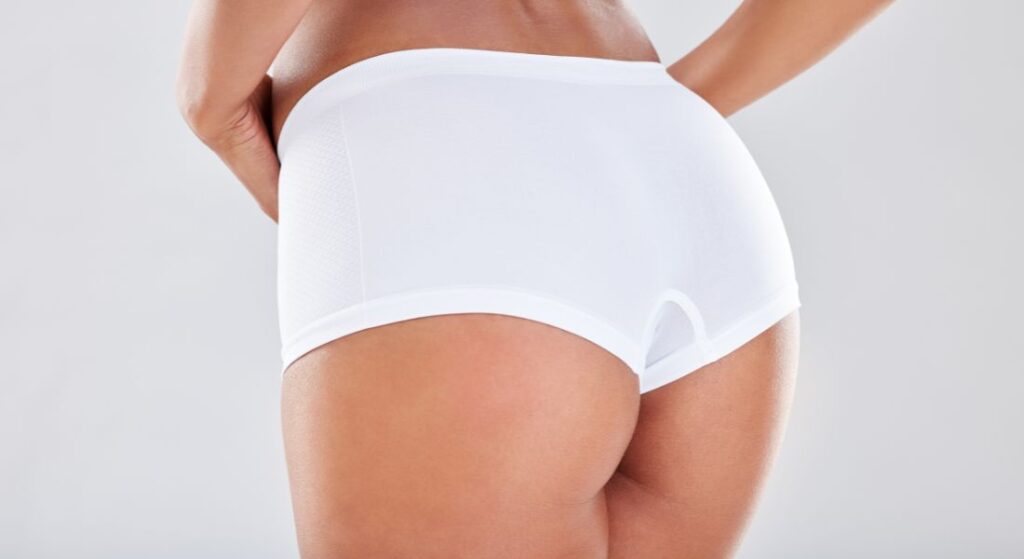
While pain and comfort are important, you’ll also want to know how long the results of Cellulaze can last. Most patients notice a gradual transformation:
– Noticeable improvement within 3–6 months: As your body produces new collagen and your skin adapts to the changes beneath the surface, you’ll start to see smoother, firmer contours. The results develop gradually, so patience is key you’ll likely notice subtle improvements first, which continue to enhance over time.
– Long-lasting effects for 12–36 months: How long the results last can depend on factors like your lifestyle, age, and the natural elasticity of your skin. Staying active, maintaining a healthy weight, and following your clinician’s post-treatment advice can all help prolong the benefits.
– Maintenance treatments: Some patients may choose occasional follow-up sessions to maintain optimal smoothness, especially if new cellulite begins to appear or your skin’s elasticity changes.
Knowing that the results are durable often makes the brief discomfort during treatment more acceptable. In fact, many patients feel that the temporary sensations during Cellulaze are a small trade-off for smoother, firmer skin that can last for years.
With the right care and realistic expectations, you can enjoy the benefits of Cellulaze well beyond the treatment itself, giving you confidence in your skin and helping you feel more comfortable in your own body.
Tips for Reducing Discomfort
If you’re feeling a little nervous about pain during your Cellulaze treatment, there are several ways to make the experience as comfortable as possible:
Talk to your dermatologist about anaesthesia options: Before your procedure, discuss what kind of numbing or sedation will work best for you. Knowing your options ahead of time can help you feel more relaxed and in control.
Schedule the procedure when you can rest afterward: Giving yourself time to take it easy after your session can make a big difference. Planning a day off or light activities for the following day helps your body recover more comfortably.
Follow post-treatment instructions carefully: Wearing compression garments, using cold compresses, and avoiding strenuous activity all help reduce swelling, soreness, and tenderness. Sticking to these guidelines ensures your recovery is smoother.
Stay hydrated and eat a healthy diet: Drinking plenty of water and eating nutrient-rich foods supports your body’s natural healing process, helping your skin recover faster and feel more comfortable.
Listen to your body: Everyone reacts differently, so pay attention to how you feel. If anything is unusually uncomfortable, reach out to your clinician they can offer guidance and reassurance.
By planning ahead and taking these steps, you can make your Cellulaze treatment both effective and comfortable, giving you confidence that you’ll get the best possible results with minimal discomfort.
Who Might Experience More Discomfort?
Some factors can make Cellulaze slightly more uncomfortable:
– Low pain threshold – People with heightened sensitivity may notice more discomfort.
– Multiple areas treated in one session – Treating large regions like the thighs and buttocks simultaneously can increase soreness.
– Previous surgeries or scar tissue – May cause slight discomfort during laser application.
Your dermatologist can tailor the procedure to minimise these issues, using targeted anaesthesia and careful technique.
FAQs About Cellulaze Pain and Recovery:
1. Is Cellulaze very painful?
Most patients describe the sensations as mild to moderate. You might feel pressure, stretching, or warmth, but with local anaesthesia (and optional sedation if needed), sharp pain is uncommon. Post-treatment soreness is usually minimal and short-lived.
2. How long does the discomfort last?
Tenderness, mild swelling, or bruising can last a few days up to a week. Most people can manage this with light movement, cold compresses, and over-the-counter pain relief as recommended by their clinician.
3. Can Cellulaze be done without anaesthesia?
While technically possible, it’s not recommended. Anaesthesia keeps you comfortable and allows the clinician to work effectively beneath the skin. You’ll feel pressure and movement without sharp pain, making the session much more tolerable.
4. Will I need painkillers after the procedure?
Many patients find that mild over-the-counter pain relief is sufficient. Your clinician will advise what’s safe for you and following post-care instructions like wearing compression garments can also reduce discomfort.
5. How does Cellulaze compare to non-invasive treatments?
Topical creams or massage are painless but offer minimal results. Non-invasive lasers or radiofrequency are usually pain-free but require multiple sessions for subtle improvements. Cellulaze may feel slightly uncomfortable during treatment, but it addresses the structural causes of cellulite for longer-lasting results.
6. Does treatment of multiple areas increase pain?
Yes, treating larger areas like both thighs and buttocks in a single session can lead to slightly more tenderness afterward. Your clinician can adjust anaesthesia and technique to keep you comfortable throughout.
7. Are there ways to minimise discomfort before treatment?
Yes! Talk to your dermatologist about anaesthesia options, schedule your session when you can rest afterward, and plan light activities for the following days. Being prepared mentally and physically helps reduce perceived discomfort.
8. Can previous surgeries or scar tissue affect pain?
Scar tissue or previous surgical areas may feel more sensitive during treatment. Your clinician will carefully target these spots and adjust the technique to minimise discomfort while still achieving results.
9. How soon can I return to normal activities?
Most people can resume light daily activities within a few days. Avoid strenuous exercise or heavy lifting for 1–2 weeks to allow the treated areas to heal properly.
10. Is the discomfort worth the results?
Many patients agree that it is. The brief sensations during treatment are a small trade-off for smoother, firmer skin and reduced cellulite that can last for 12–36 months, often with the option for maintenance sessions to prolong results.
Final Thoughts: Pain and Comfort with Cellulaze
Cellulaze is generally well-tolerated, and most patients report only mild discomfort during and after treatment. The combination of local anaesthesia, optional sedation, and professional technique ensures a safe and comfortable experience.
Post-treatment soreness and tenderness are temporary and can be managed with compression garments, gentle activity, and recommended medications. The benefits smoother, firmer, and longer-lasting reduction of cellulite often outweigh the brief discomfort.
If you’re considering Cellulaze treatment, you can contact us at the London Medical & Aesthetic Clinic to discuss your goals with Dr Ayham Al-Ayoubi. Together, you can review your comfort concerns, explore anaesthesia options, and plan your recovery. With professional care, you’ll be able to enjoy the aesthetic benefits of Cellulaze while keeping any discomfort to a minimum.
References:
1. DiBernardo, B.E., 2016. A multicenter study for cellulite treatment using a 1440-nm pulsed laser with side-firing fiber. Journal of Cosmetic and Laser Therapy, 18(5), pp. 276–280. https://pmc.ncbi.nlm.nih.gov/articles/PMC5127477/
2. Stevens, W.G., 2023. Multicenter pivotal study demonstrates safety and efficacy of Cellulaze for cellulite treatment. Aesthetic Surgery Journal, 43(1), pp. 97–104. https://academic.oup.com/asj/article/43/1/97/6631447
3. Sadick, N.S., 2019. Treatment of cellulite: A review of current modalities. Journal of Cosmetic Dermatology, 18(3), pp. 641–646. https://www.sciencedirect.com/science/article/pii/S2352647518300418
4. AAD, 2023. Cellulite treatments: What really works? American Academy of Dermatology. Available at: https://www.aad.org/public/cosmetic/fat-removal/cellulite-treatments-what-really-works
5. Tanzi, E.L., 2024. Improvement in Cellulite Appearance After a Single Rapid Acoustic Pulse Treatment: 12-Week Results. Dermatologic Surgery, 50(2), pp. 210–216. Available at: https://journals.lww.com/dermatologicsurgery/fulltext/2024/02000/improvement_in_cellulite_appearance_after_a_single.10.aspx

